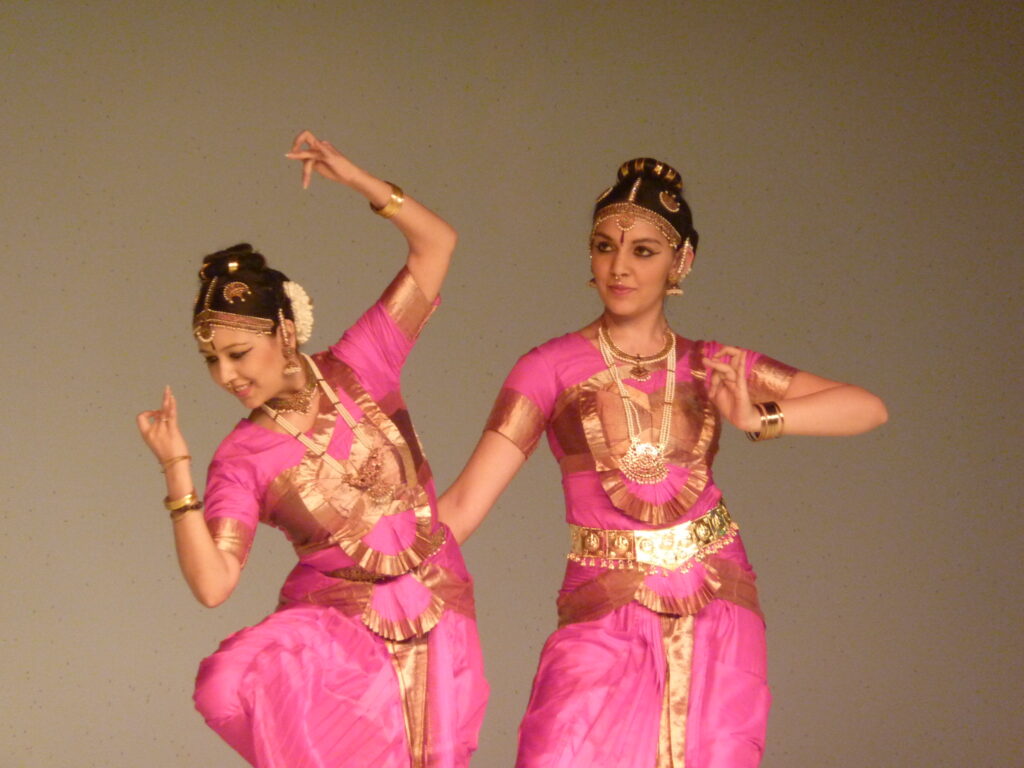Kuchipudi is an important classical dance form of India, It originated in Andhra Pradesh. Although it originated in the seventeenth century, there is evidence showing it’s existence much before that time. This is a devotional dance for pleasing God. It derives its form from Sanskrit text Natya Shastra.

Story Behind Kuchipudi
It is said that an orphan boy was raised by the village of Srikakulam. The boy was married off in his childhood as it was the custom of that time. He was quite young than time and did not know anything about married life. Later he went to Udipi for his studies.
When he came back to the village people asked him to go to his wife and start his grast jivan or married life. He listened to them and started his journey towards his wife’s village. In the route he came across a river, halfway of crossing it he felt his strength leaving him.
He prayed to God to give him enough strength to cross this river. He managed to cross the river. It was then when he realized that his true journey is towards God. He became a sanyasi and settled in the village of Kuchelapuram.
Sidhendra Yogi, the name he acquired while studying Vedas, taught this dance form to the Brahmins of the village. It was the dance performed while worshipping the god. It is based on religious themes.
There is one more story that says Sidendra Yogi was visited by Lord Krishna in his dreams where he asked him to compose dance based on the story of bringing paarijaat for his wife Satyabhaama.
Kuchipudi in Earlier Days
In the beginning, only men used to perform Kuchipudi. Men did even the role of Satyabhama and did it very gracefully. At that time women were not allowed in social events whether they were religious or non-religious.
This dance form became so popular that it was given good attention and respect from various rulers. The Nawab of Golconda issued a statement saying Brahmin families who pursue this art will be granted Agrahaarama.
The ancient dance started with praying God by sprinkling water in burning incense. Then every dancer of the group introduced itself and the act they are going to play. They also give a short performance while introducing themselves. Then the dance starts with hand and eye gestures. Eye gestures tell us the emotions that are being played by the performer. Those gestures are so strong that words are not needed to see anger, happiness, sadness, or any other emotion.
Modern Kuchipudi
With time Kuchipudi has seen many changes in its form. For example, the original dance form was performed by group performers but now there are solo performances too. This is why this dance is divided into two forms one traditional dance drama and the other solo dance drama. Solo-performances are mainly done by female dancers.
Modern Kuchipudi was formed in the twentieth century and it’s credit goes to people who started performing it on stage. One oldest name that is known for this cause is Lakshminarayan Shastry.
Makeup and Costume
In ancient times men played the role of women too. So makeup was used accordingly. If you see it yourself you will realize what great job makeup artists do. Females wear a saree where men wear a dhoti. These clothes are designed in such a way that movements are not affected by them. The dancer playing the role of female does not wear a traditional saree. This saree is somewhat similar to dhoti that covers both legs separately.
Eye makeup is the most important part of the makeup as expressions are what this dance is all about. Dancers wear heavy make-up on eye and light make-up on the entire face. Heavy makeup is used to highlight the eyes so that expressions are visible from a distance too.
Music And Instruments
The dance is accompanied by several classical musical instruments.
- Mridangam
- Cymbals
- Flute
- Thamburi
- Violine
- Veena
Kuchipudi dancers dance on a brass plate to showcase their balance and control. This dance form takes seven to ten years to master. Kids who are interested in classical dance start learning it very early so that their bodies get used to it, and they learn quickly. The oldest Kuchipudi dance school is in Chennai that was started by Vempati Chinna Satya.

Pingback: Eight Classical Dances of India As Per Sangeet Natak Akademy - Auchitya
Pingback: Folk Dances of India - Auchitya
Pingback: All Folk Dances of India - Auchitya
Pingback: 8 Classical Dances of India As Per Sangeet Natak Akademy - Auchitya